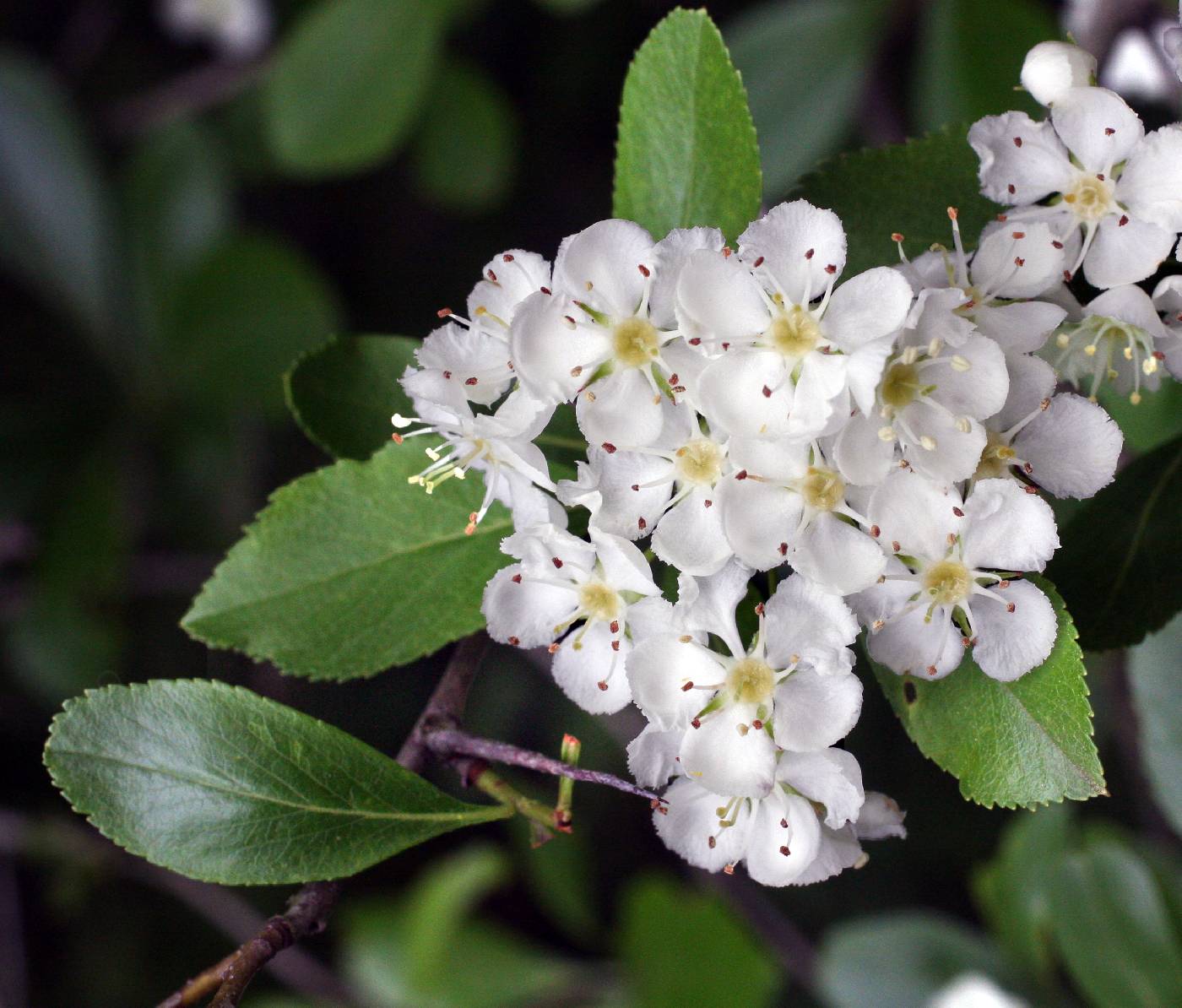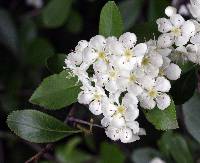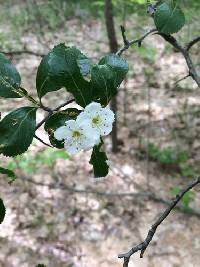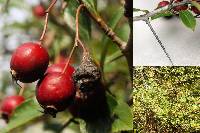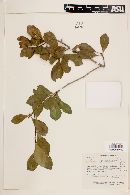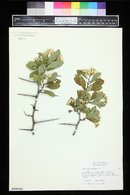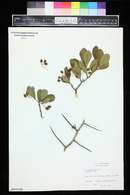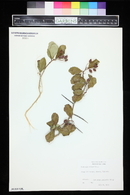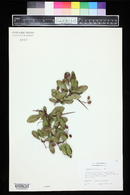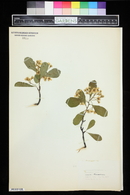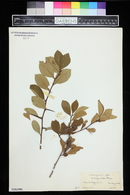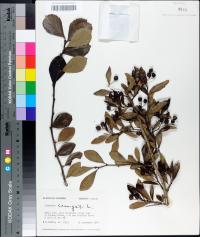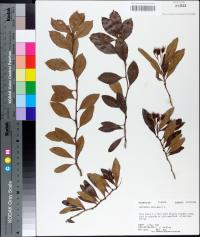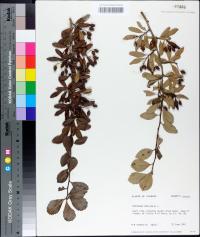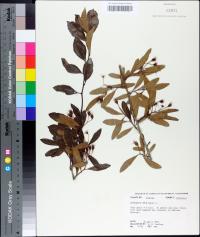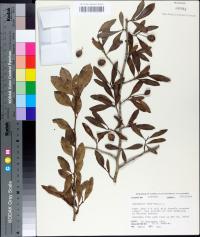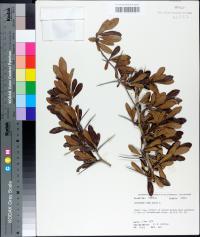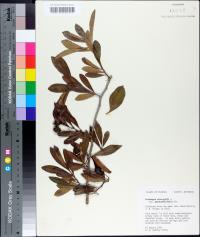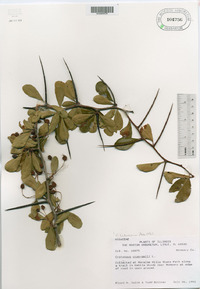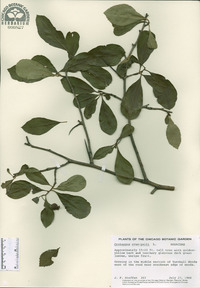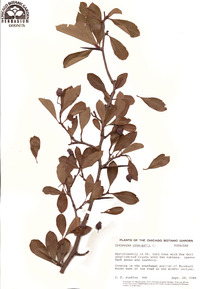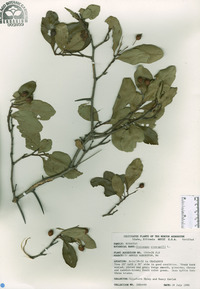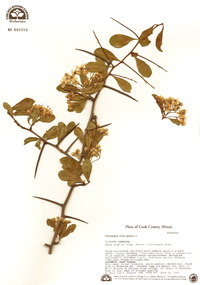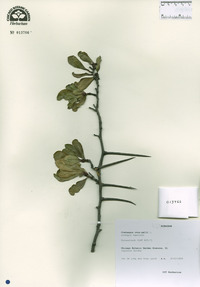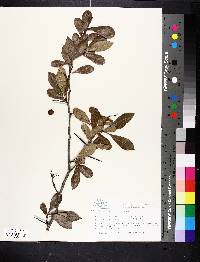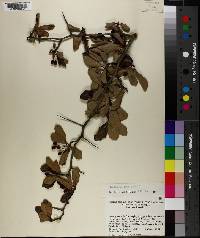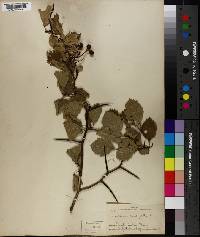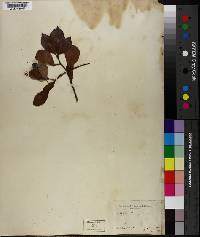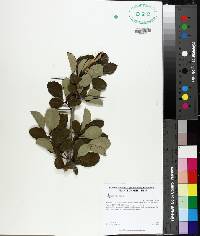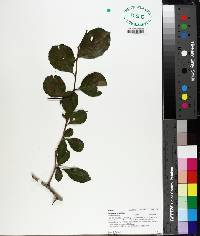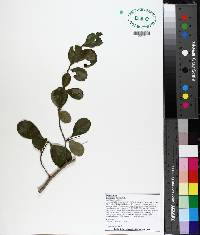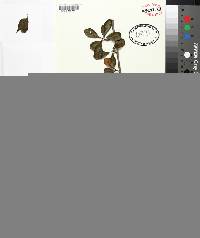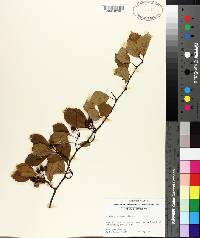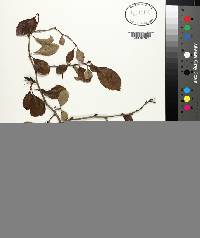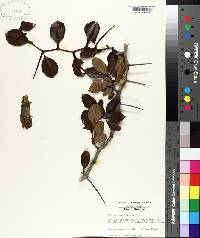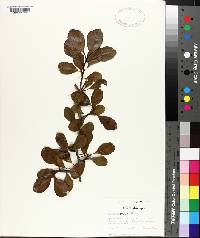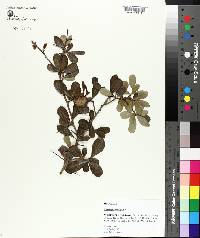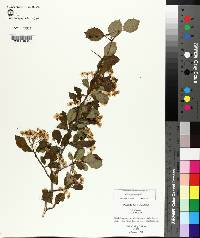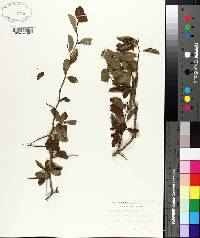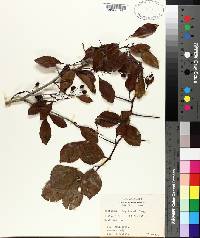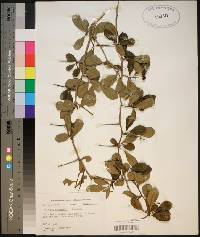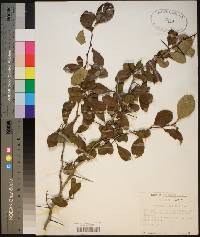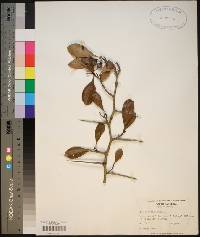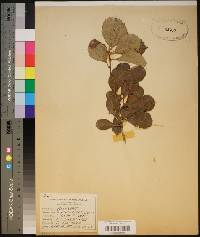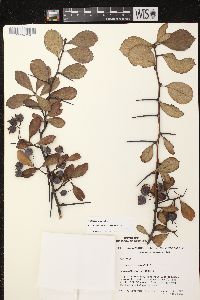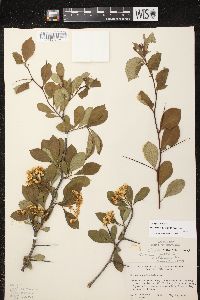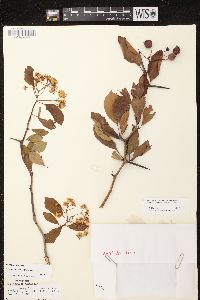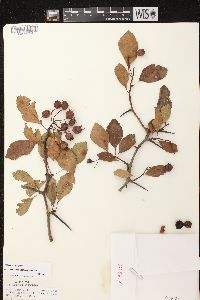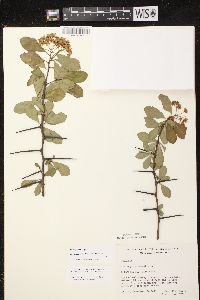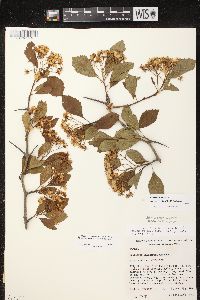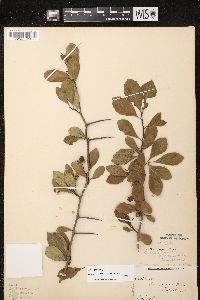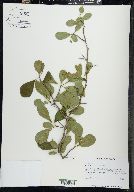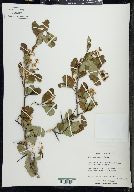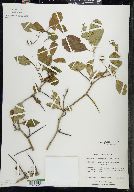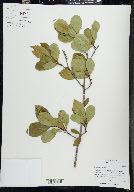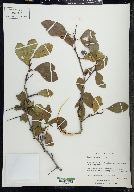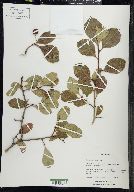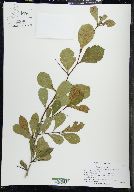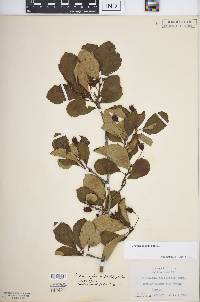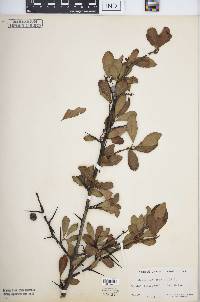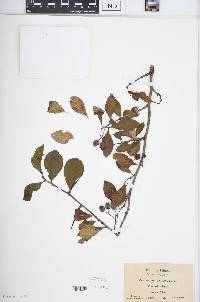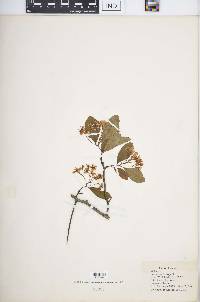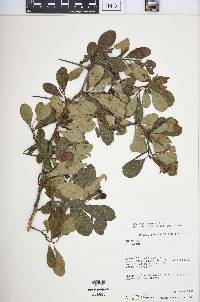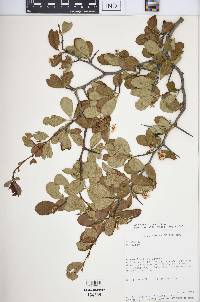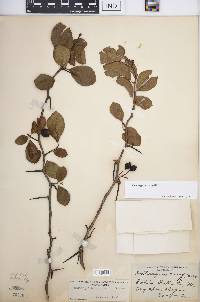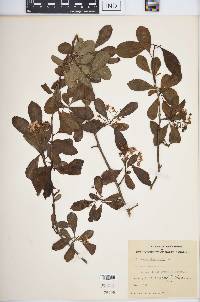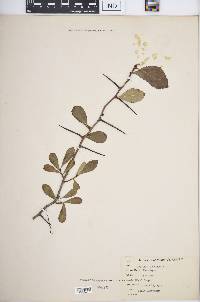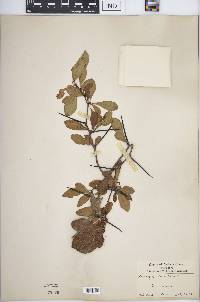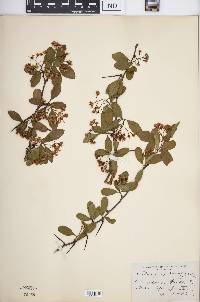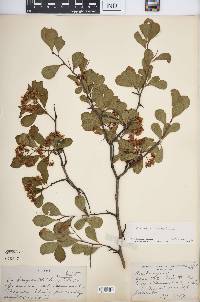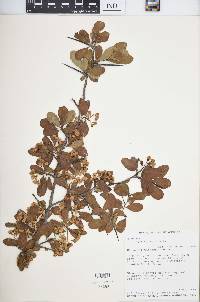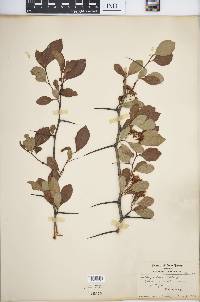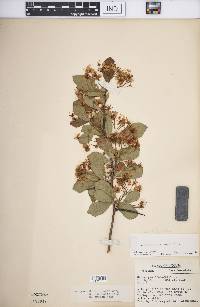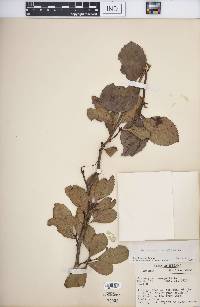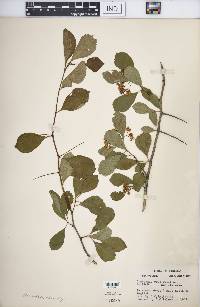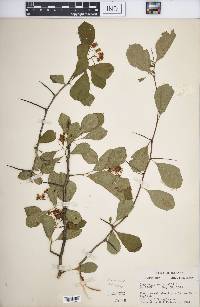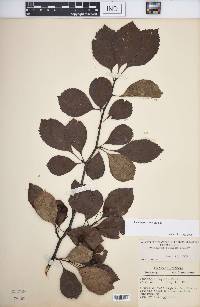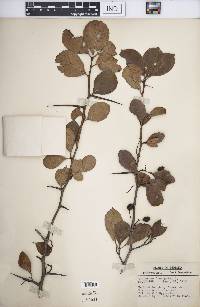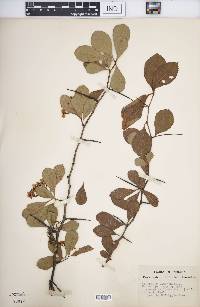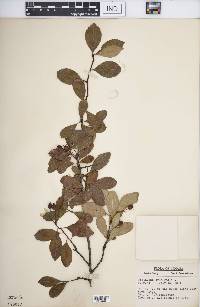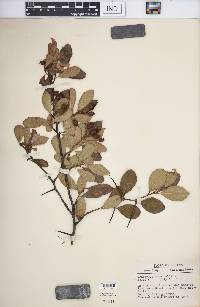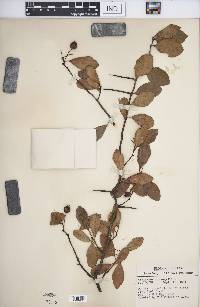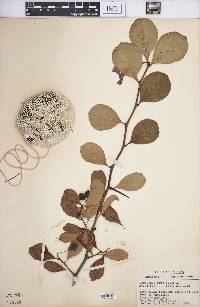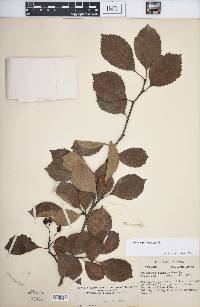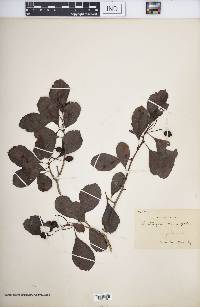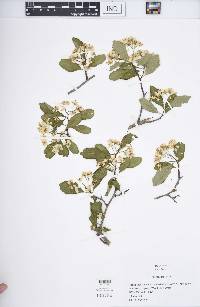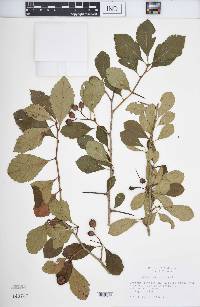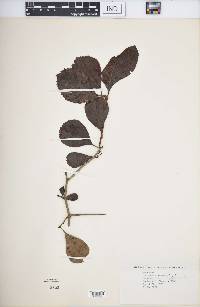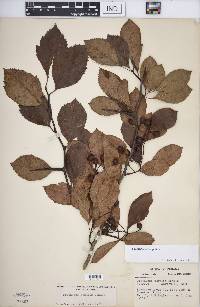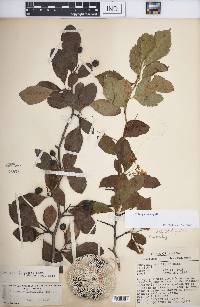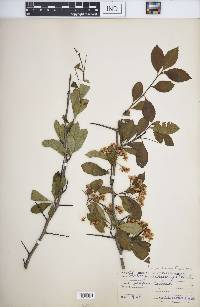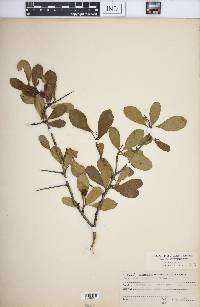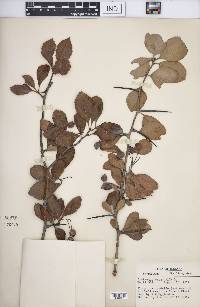
|
|
|
|
Family: Rosaceae
Cock-Spur Hawthorn, more...cockspur hawthorn
[Crataegus angustifolia (Ehrh.) Borkh., moreCrataegus crus-galli var. inermis Lange, Crataegus crus-galli var. ovalifolia (Hornem.) Lindl., Crataegus crus-galli var. splendens Aiton, Crataegus intermixta Sarg., Crataegus lavallei Hort. Paris ex Sarg., Crataegus livoniana Sarg., Crataegus macra Beadle, Crataegus persistens Sarg., Crataegus shinnersii , Crataegus watsoniana Steud.] |
Arborescent shrub or more often a tree to 10 m, often with a broadly rounded or depressed top and widely spreading branches; twigs glabrous or nearly so; lvs glabrous or nearly so, dark green and glossy above, the floral ones mostly obovate or narrowly obovate to sometimes elliptic, 2-6 נ1-3.5 cm, only obscurely if at all lobed, those on vegetative shoots more often 5-9 נ3-8 cm and sometimes more evidently lobed; petiole 0.3-2 cm; fls 0.8-1.8 cm wide, in glabrous or subglabrous, usually lax, compound cymes; sep lanceolate or lance-linear, entire or occasionally somewhat serrate; fr 0.6-1.5 cm thick, green to dull or bright red, remaining rather hard and dry; nutlets usually 1 or 2(3-5); 2n=51, 68. Que. to Fla., w. to Minn., Kans., and Tex. (C. acutifolia; C. canbyi; C. hannibalensis; C. ohioensis; C. permixta; C. prunifolia; C. pyracanthoides; C. regalis; C. schizophylla; C. tantula; C. vallicola) Typical C. crus-galli has 10 usually white anthers; plants with 20 pink anthers have been segregated as C. tenax Ashe (C. fontanesiana, misapplied). Gleason, Henry A. & Cronquist, Arthur J. 1991. Manual of vascular plants of northeastern United States and adjacent Canada. lxxv + 910 pp. ©The New York Botanical Garden. All rights reserved. Used by permission. From Flora of Indiana (1940) by Charles C. Deam Leaves mostly spatulate or obovate, 2-6 cm long, 1-3.5 cm wide, rounded or acute at the apex, attenuate at the base into short, slender petioles, sharply serrate to below the middle, glabrous, firm in texture, usually glossy on the upper surface; flowers 12-15 mm wide, in compound, glabrous corymbs; stamens about 10; anthers pink or creamy white; styles 1-3; fruit obovoid to subglobose, 9-12 mm in diameter, flesh thin, hard and dry, dull crimson, with dark blotches or dots; calyx sessile or nearly so; calyx lobes entire or slightly serrate near the base; nutlets 1-3, usually 2. A small tree or rarely a stout shrub up to 6-7 m high, with slightly scaly, pale gray bark and spreading branches, forming a low, flat crown in old specimens: branchlets often flexuous and armed with numerous, long, slender thorns. General throughout Indiana, but most common in limestone regions, growing in fertile or rocky ground in thickets and pastures, and in open woodland along small streams. [Variety pyracanthifolia] differs from the typical form [Crataegus crus-galli] only in the narrower leaves and the usually smaller fruit. This variety is known in Indiana only from Posey County, but it is likely to be found in other sections. [E.J. Palmer in Deam describes C. acutifolia, as follows:] leaves oblong-obovate or elliptic, mostly 3.5-6 cm long, 2.5-3.5 cm wide, rounded or abruptly pointed at the apex, serrate nearly to the base with broad, shallow teeth, or on shoots sometimes obscurely lobed and with sharp, spinulose teeth, rather thin but firm, glabrous, dull or slightly glossy above; flowers 12-14 mm in diameter in lax, glabrous, many-flowered corymbs; stamens about 10-15; anthers white or pale yellow; styles 2-4; fruit subglobose or slightly elongated, 7-8 mm in diameter, dull red, firm but mellow at maturity ; nutlets usually 3-4. A tree up to 10 m high with thin, pale gray, scaly bark and with slender wide-spreading branches, usually sparingly armed with slender thorns. This species may have originated as a hybrid between Crataegus viridis and Crataegus crus-galli or some species of the Crus-galli group, as is suggested by the intermediate character of the bark, foliage, and fruit, and by the fact that it is found only within the range of these species. In Indiana it is known only from Jackson, Lawrence, and Posey Counties, growing in low, alluvial woods along the larger streams. [E.J. Palmer in Deam recognizes C. regalis as follows] leaves oblong-obovate or elliptic, or on shoots oval to nearly orbicular, 3-7 cm long, 2-4 cm wide, usually abruptly pointed or short-acuminate at the apex, narrowed at the base into slender petioles (8-15 mm long), sharply serrate to below the middle, firm to subcoriaceous, glabrous, shining above; flowers 14-16 mm in diameter, in lax, glabrous, many-flowered corymbs; stamens about 10; anthers white or cream color; fruit oblong or ellipsoid, 8-10 mm long, 7-8 mm thick, green or becoming dull red; calyx lobes linear, entire or nearly so, often persistent and appressed on the fruit; nutlets 2-3. A tree sometimes 6-8 m high, with gray, slightly scaly bark and with wide-spreading branches, abundantly armed with long, spreading thorns. Found in the southern part of Indiana growing in fertile soil along streams and in open woodland and thickets. |
This project was made possible in part by the Institute of Museum and Library Services [MG-70-19-0057-19].
Powered by Symbiota

